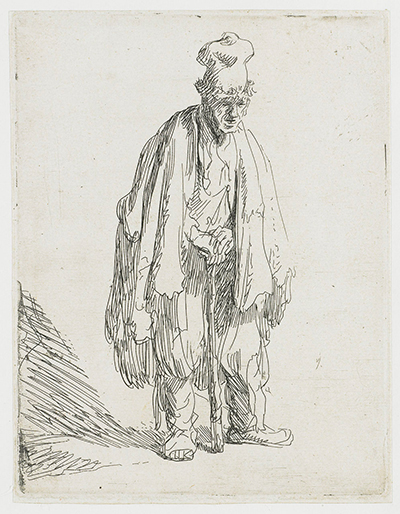This simple but well delivered artwork from Rembrandt perfectly suited his growing confidence within the etching medium. It was completed in around 1629/1630, but many series of prints would have been produced from it across a period of several years.
Rembrandt was always intrigued by the lives of the poor, certainly more so than most artists of this period. He would even depict himself as a beggar in several self portraits in an attempt to better understand their predicament and mindset. The artist also liked to work fairly quickly with his etchings in the early days and would not always include too much detail, keeping things fairly simple. He was talented enough to achieve an awful lot with just an economical use of line, just as the likes of Picasso would do many centuries later with his famous single line creations. Whilst learning from professional printmakers, Rembrandt was keen to forge his own path and became secretive over time about his methods of production, even unwilling to relay his methods to members of his own studio.
The artist would produce so many portraits that historians would start to name them in a very descriptive manner in order to make identifying them more easy. This piece is therefore known as Beggar in a High Cap, Standing and Leaning on a Stick, and that essentially sums up the content here. There is no background to speak of, and just a slight shadow to the left hand side. The elderly figure looks worn by life and wears some heavy looking clothing which aims to protect him from the elements. He leans onto a stick which underlines his health problems that no doubt have been either caused by, or worsened, by his living conditions. Rembrandt must have had a compassionate side to his character in order to even notice these individuals, as many other members of society would walk by without even being aware of their existence.
One of the prints from this etching can be found in the collection of the Minneapolis Institute of Art in the US. They possess an impressively diverse selection of artifacts from different civilisations and their European art is just a small part of that. You will find, for example, many examples of Chinese and Japanese art here, as well as a number of items from African cultures as well. There is so much to see and enjoy here that almost any taste is catered for somewhere within this large and diverse selection of items. It can be considered one of the more interesting collections within the US, and draws in all manner of different parts of society because of the variety on display.




